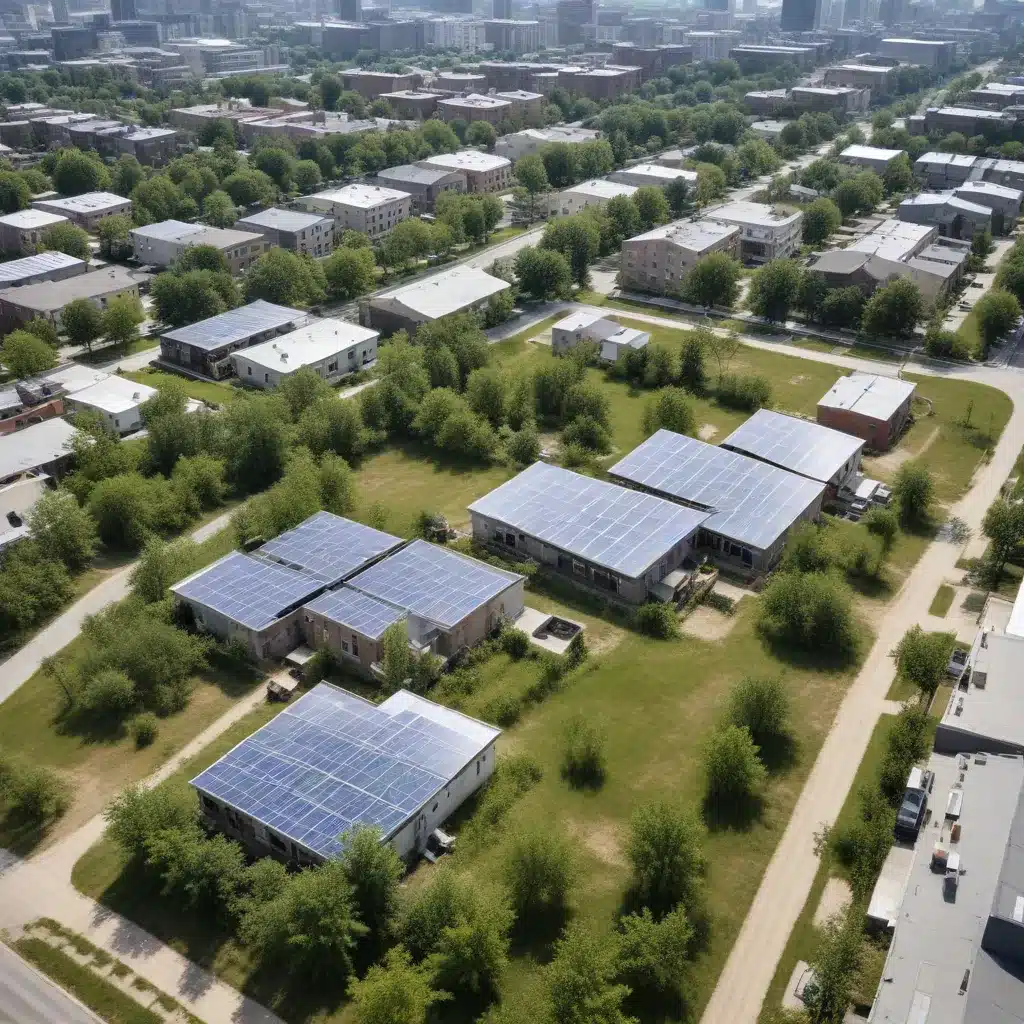
As cities grapple with the imperative to transition toward renewable energy and address longstanding environmental injustice, the strategic siting of clean energy infrastructure on vacant or underutilized urban land has emerged as a complex and multifaceted challenge. This article delves into the nuances of this critical intersection, exploring the opportunities and obstacles through the lens of ecological considerations, policy frameworks, and community engagement.
Urban Land Use Patterns
The urban sprawl that has characterized much of North American development in the 20th century has left many cities with expansive tracts of vacant land, often concentrated in historically marginalized communities. These areas, burdened by the legacy of redlining and disinvestment, present both challenges and potential for clean energy deployment.
Simultaneously, a countervailing trend toward infill development has gained momentum, as cities seek to optimize existing infrastructure and curb the environmental impacts of sprawl. This has ushered in a growing emphasis on brownfield redevelopment – the repurposing of former industrial or commercial sites that may be contaminated or underutilized. The interplay between these divergent land use patterns is a crucial consideration in siting clean energy projects.
Renewable Energy Infrastructure
The quest to harness the power of the sun and wind has driven the proliferation of solar energy systems and wind turbines across the urban landscape. These renewable energy technologies offer the promise of clean power generation, reduced greenhouse gas emissions, and economic opportunities. However, their integration into the built environment requires navigating a complex web of spatial, technical, and social considerations.
Solar energy systems, for instance, thrive on large, unobstructed surfaces, making vacant lots and rooftops attractive candidates. Yet, the potential impact on surrounding property values and the displacement of future development plans have sparked debates within affected communities. Innovative approaches, such as the integration of solar arrays with affordable housing or the co-location of solar and urban agriculture, have emerged as potential solutions.
Wind power generation, on the other hand, faces unique challenges in dense urban settings, where the built environment can disrupt air flow and limit the viability of turbines. Nonetheless, the exploration of micro-wind technologies and the strategic siting of turbines in urban greenways or atop high-rise buildings hold promise for harnessing this renewable resource.
Environmental Considerations
The siting of clean energy infrastructure on vacant urban land necessitates a comprehensive environmental impact assessment, evaluating the potential effects on local ecosystems, biodiversity, and the overall ecological health of the area. This holistic approach can help identify opportunities for ecosystem restoration and the integration of green infrastructure, such as urban forests, wetlands, and pollinator gardens.
In many cases, vacant lots harbor native plant communities and provide valuable habitat for urban wildlife. The careful mapping and land remediation of these sites can ensure the preservation of these vital ecological assets while accommodating clean energy projects. Strategies such as phytoremediation, which utilizes plants to extract or neutralize contaminants, can help restore the health of brownfield sites and pave the way for sustainable energy solutions.
Policy and Regulatory Frameworks
The successful integration of clean energy infrastructure within urban environments is heavily influenced by the policy and regulatory landscape. Zoning codes, land use regulations, and incentive programs can either facilitate or hinder the deployment of these technologies, depending on their design and implementation.
Progressive municipalities have recognized the need to update their planning and zoning frameworks to accommodate renewable energy systems, often through the designation of renewable energy zones or the incorporation of solar access and wind easements into local ordinances. Equally important are incentive programs, such as tax credits, rebates, and feed-in tariffs, which can catalyze private investment and community participation in clean energy projects.
Stakeholder Engagement
Engaging diverse stakeholders, from community members to industry experts, is crucial for the successful siting of clean energy infrastructure on vacant urban land. This collaborative approach can help navigate the complex web of social, economic, and environmental considerations that often arise in these projects.
Community participation is essential, as residents of marginalized neighborhoods may harbor legitimate concerns about the potential impacts on property values, displacement, and environmental justice. Fostering open dialogues, incorporating community input, and ensuring equitable outcomes are vital for building trust and securing long-term support.
Interdisciplinary collaboration among urban planners, renewable energy specialists, ecologists, and community organizers can also yield innovative solutions that balance the need for clean energy with the preservation of ecological assets and the promotion of sustainable development.
Spatial Data and Analysis
The effective siting of clean energy infrastructure on vacant urban land requires a nuanced understanding of the spatial dynamics at play. Geographic Information Systems (GIS) and advanced site suitability modeling techniques can help identify optimal locations that minimize environmental impacts, leverage existing infrastructure, and align with community priorities.
Detailed spatial analyses can uncover factors such as solar irradiation, wind patterns, soil conditions, infrastructure constraints, and environmental sensitivity, guiding the strategic placement of renewable energy systems. This data-driven approach can also inform policy decisions and community engagement efforts, ensuring that clean energy projects are tailored to the unique characteristics of each urban context.
As cities navigate the complex landscape of vacant land and clean energy siting, the imperative to address environmental justice, ecological preservation, and sustainable development is paramount. By embracing a holistic, collaborative, and data-driven approach, urban communities can harness the transformative potential of renewable energy while fostering more equitable and resilient neighborhoods. For expertise in arboricultural and ecological considerations, visit TriCounty Tree Care – your trusted partner in urban forestry and green infrastructure.


